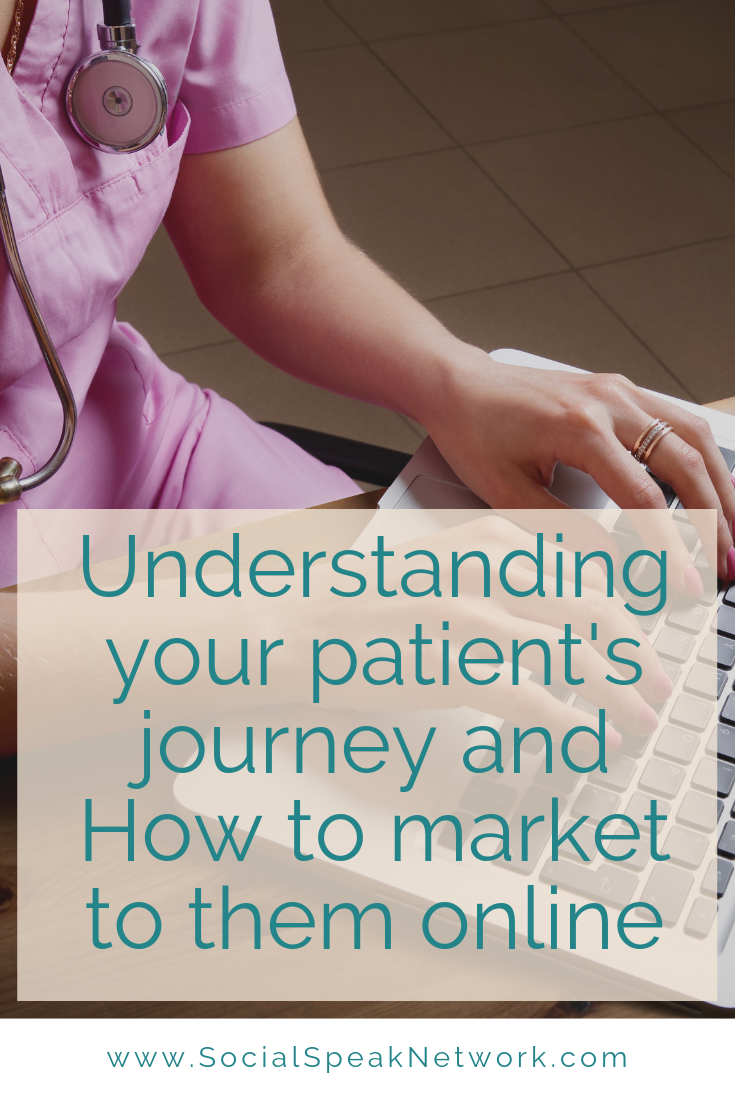From the moment a patient seeks medical care for an injury or makes an appointment with their family doctor to determine the cause of their recent symptoms, the patient has begun a journey during which multiple people may be involved.
Hospitals, physicians, nurses, and other providers, may all be, at one point or another, involved in this patient journey.
When we start to think of the “Patient Journey” we need to think of these things:
- What they are going through?
- What are their pain points before they get to you?
- What are they experiencing and struggling with?
By identifying these things this helps you as a business owner be able to provide the right resources they are looking for.
In today’s healthcare landscape, consumers have more options, choices, and resources when it comes to the direction of their own care. This ecosystem shift slab that the patient transportation is not a linear one, but rather a multi-stage clause with many different channels and touch points along with the media (much like a tree with dozens of different branches).
A few stages of the “Patient Journey” –
Awareness: Self-assessment of barrier and symptoms, leading to online research and education, consequence problem on social media, etc. This is the start id their journey, they have recognized that something is not right with their body, or how they feel. Most people will become aware of their issue and then start the research process.
This is where they will spend hours online on different tools like Google, Pinterest, Facebook, WedMd, etc. to try to identify what they are going through.
Help: At this point, the patient understands they need help with their symptoms and are looking for the correct place to go. This is where your resource marketing comes into handy because you have been building a rapport with your patients, they trust you and know you are the right person to start with.
Care: This piece is where the “know, like, trust” factor comes in. When a patient chooses you to be their caretaker and help them with their issues or symptoms this is a really big deal. most people just think I am a doctor and this is what I am supposed to do, but you are doing so much more. You are becoming a large resource mentally, physically, and emotionally.
Treatment: You may be on the journey with these patients for a while, or just a couple visits. It’s important to take note of their treatment so you can use that data to help other patients like them. Treatment can be anything from home remedies, physical therapy, chemo, counseling, whether it be large or small treatment it will be a world of difference to your patient if they are no longer in pain.
Behavioral/Lifestyle Change: Changes to reduce readmissions and promote proactive health. How has your care and treatment helped them to live a better life? This piece right here is the end goal, this is what people are looking for.
- Do they want to be able to walk with ease again?
- Be able to live to see their family grow?
- Be able to overcome their fears?
Whatever that lifestyle is for them that they will be able to achieve when they are doing work with you and your practice is the first step to your digital marketing. They are wanting something better in their life, they became aware of their problem, sought help, got treatment, and now ready to live their life again.
Ongoing Care/Proactive Health: What is the call-to-action? Do they need to come for follow-up appointments, exercises at home, home remedies, physical therapy, etc.? What do they need to do to continue their lifestyle and be proactive from here on out?
It’s important for the patient to understand their journey and continue to improve.
WHAT IS PATIENT JOURNEY MAPPING?
Patient route mapping in the healthcare industry is a data-driven, patient-centric approach to planning marketing activity, communications, and (to some degree) even delivery care. It’s a way to gather the facts, discover the anticipation of your patient, and then line-up that information to deliver an exemplary healthcare experience.
What testament a patient excerpt map do for you?
In short, patient section maps give you a clear guide for how to improve retention and acquisition through customer satisfaction. Exceeding patient expectation benefits your saps relation convenience twofold:
- It increases retention rates through patient satisfaction
- It increases new patient acquisition through evangelism
Word of mouth is still, and most likely always will be the best form of marketing, but if you can really connect with your patient’s on a much deeper level and be able to provide information, be a resource for them and their family. This allows you to take your digital marketing to the next level and reach more people.
Conclusion
Active listening and putting systems in place is key! You will always want a steady flow of patient’s, and as their lives change maybe they move or find a different doctor or maybe your services are no longer needed, it’s important to keep that pipeline full with new and potential patient’s that need your services.
Digital marketing is a great way to connect with a potential patient’s in your community and be more than just a provider, but a resource. Once people feel they can trust your practice and get their questions answered, that’s when the magic happens. They start talking about you online and referring you more and more.
A few things to do when you get a new patient:
- Collect their email address – don’t just leave this in your system and not do anything with it, add it to your CRM like MailChimp, InfusionSoft, SalesForce, MyEmma, Constant Contact, etc. an email software so you can send them monthly newsletters with valuable information.
- Ask them to like you on Facebook or Instagram
- Invite them to leave a positive review on Google and/or Facebook once they are satisfied with their treatment
- Then have a strong social media presence to continue to stay top of mind
Remember, you are an important piece of your patient’s journey!
Learn more about 3 Tested Tactics to Integrate Patient Journey in Digital Marketing Strategy












